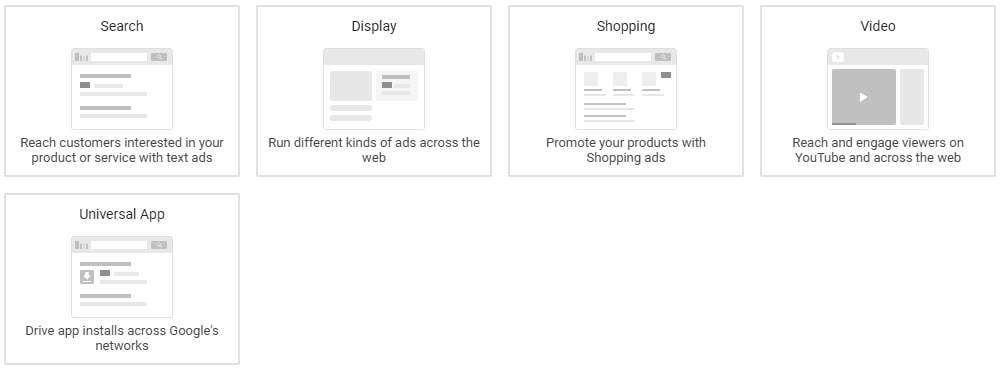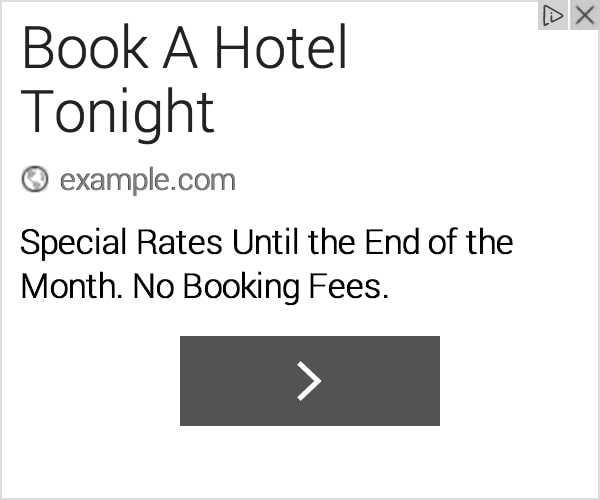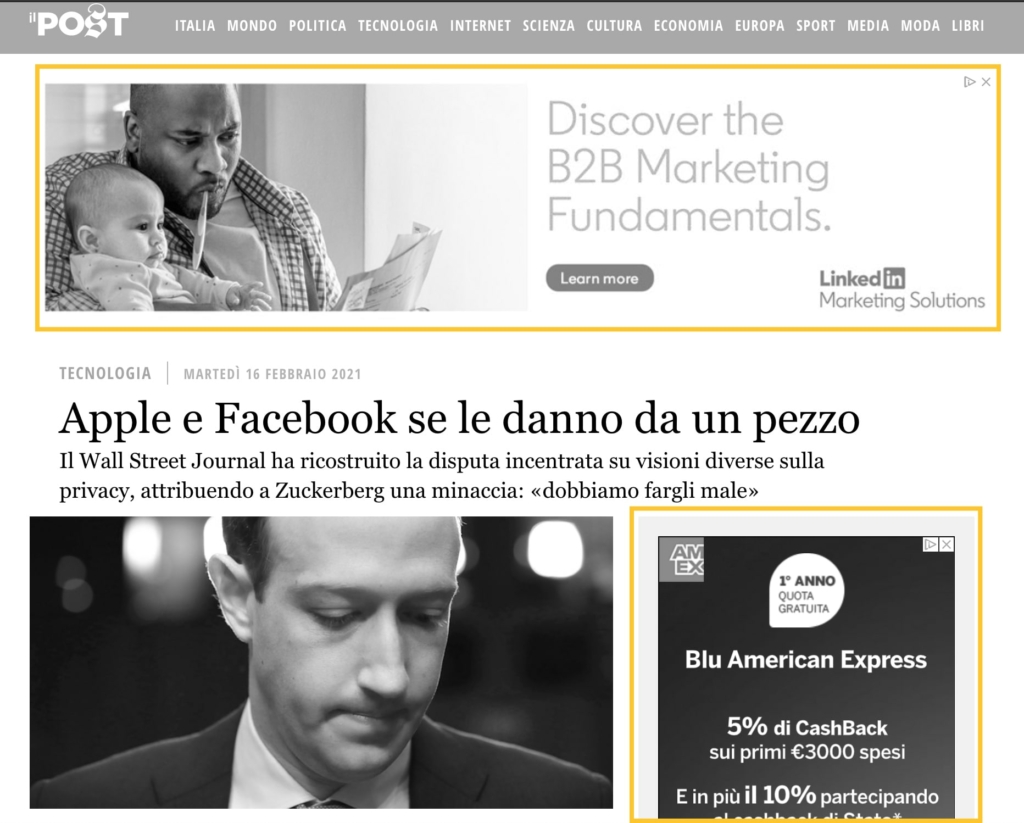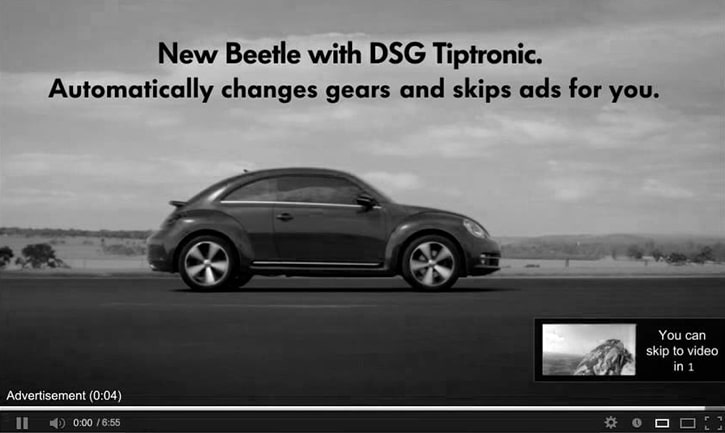As we explained in the previous article, various tools can help create successful online advertising campaigns. In this example, we’ll consider one of two such tools offered by Google Ads, particularly the Google Display Network (GDN) for B2B brands.
It’s an intuitive mechanism that lets websites reach people with targeted Display ads. In this way, business owners can monetize their sites by displaying third-party advertising banners that reach their audience within a broad network.
The Google Display Network does not place ads on a single page but rather targets them across a broad network, whether they’re viewing their favorite website, watching a YouTube video, checking email, or using a mobile app.
Note: when creating a video campaign, you must select “Video”; conversely, you can select “Display campaign.”

Thanks to its far-reaching targeting options for apps, sites, and video platforms, the Google Display Network has over two million digital “places” in which to show advertisements.
Types of campaign content
Within the GDN, the Display campaign allows you to create three types of content: text, graphics, and video.
Text Display campaign

Example of Text Display banner
The Text Display campaign allows you to show purely textual advertising banners. While they are less effective than banners that include images or videos, the upside is they tend to have a lower cost per view.
Graphic Display campaign

With Graphic Display campaigns, you can show advertising banners with images on websites, apps, or videos.
The available formats are listed on the following page.
Graphic Display campaigns are a highly effective tool for capturing the user’s attention. The ability to include images makes this the most popular format in the Display network.
Beyond this, Google allows users to choose different-sized formats. These include large banners designed to attract a lot of attention as well as smaller, less invasive formats that aren’t so prominent on the screen, such as the example below.
This feature allows the user to choose the most ideal formats for targeting a specific audience and achieving its objectives.

Pro tip: to maximize the result of Display campaigns, create similar banners with slight variations, test them to see which one returns the best result. This process is called “A / B testing,” and with Google Ads it’s easy to implement. Just load different examples and the system will tell you which one gets the most clicks.
Video Display campaign

Typically, these YouTube ad campaigns are short commercials that appear before the video (pre-roll ads) or during the video (mid-roll ads).
This type of campaign can be very effective as long as the content is of excellent quality and captures the viewer’s attention in the first 5 seconds. Fails to entice the viewer in the first few frames and he or she will almost certainly skip over the ad.
How the Google Display Network works

Let’s consider a typical purchase funnel, which tracks the customer journey from initial interest up to the final sale. The Display network is mainly located in the beginning of the funnel, which is called ¨awareness.¨ At this initial stage, a brand message reaches the user when he or she is not in an active search phase.
The click-through rate (CTR) at this point will not be too high, because, at this stage, the goal of the advertiser is to simply make its target audience aware of the brand or product in question.
The Display Network aids these advertisers by allowing them to reach a larger portion of their target audience with a relatively low cost per impression (views).

Another advantage of the Display Network is less aggressive competition in the advertising network when compared to more typical search campaigns. Plus there’s the cost. In traditional search campaigns, investments are made in specific keywords, which may stress existing budgets.
Therefore, display campaigns are a good solution if the goal is awareness, as these ads are effective at reaching users who do not yet know your product/service or brand.
To maximize results and receive more clicks, Google allows you to target a specific audience. When creating the Google Ads platform campaign, you can choose from useful features to help identify your ideal target and the type of campaign you’d like to launch. The algorithm will then define the suitable spaces to reach potentially interested users.
For example, suppose you sell components for pharmaceutical machines in Italy. In that case, you can set the audience target to “business professionals,” or “Italians aged 30 and over,” etc. Then enter the keywords related to that specific sector where you’d like to show the ad. You can target it to:
- all users who have that potential interest;
- those within the websites that deal with that topic.
It’s worth noting that, concerning B2B, Google Ads does not allow a targeting as precise as that of LinkedIn Ads, where you can filter the audience by market, company, company position, etc. That said,, Google has much lower costs.
Retargeting
Another method to maximize the effectiveness of display campaigns is retargeting.
This involves inserting a tag, known as a tracking pixel in the website code and Cookies – code traces saved on a web browser that stores navigation information. By tracking this pixel, the Google algorithm can then show your ad to users who already have expressed an interest in your product/service.
For example, a user could land on your website without filling out any contact forms or taking any purchase action. In these instances retargeting can be a powerful tool to gain more insight into the user’s interests, thus making it easier to target them with effective campaigns.
This applies to e-commerce as well. You can use retargeting to show the site visitor an offer concerning the product he or she put in their digital cart but later abandoned. This is precisely the strategy Amazon employs on social networks like Facebook.
Conclusion
Display campaigns can be effective tools to not only increase brand awareness but also help potential customers make a purchase – or at least leave their contact info.
It’s thanks to these tracking systems from Google that we can now target ads specifically to audiences proven to have interests and behaviors in line with certain products and services.







